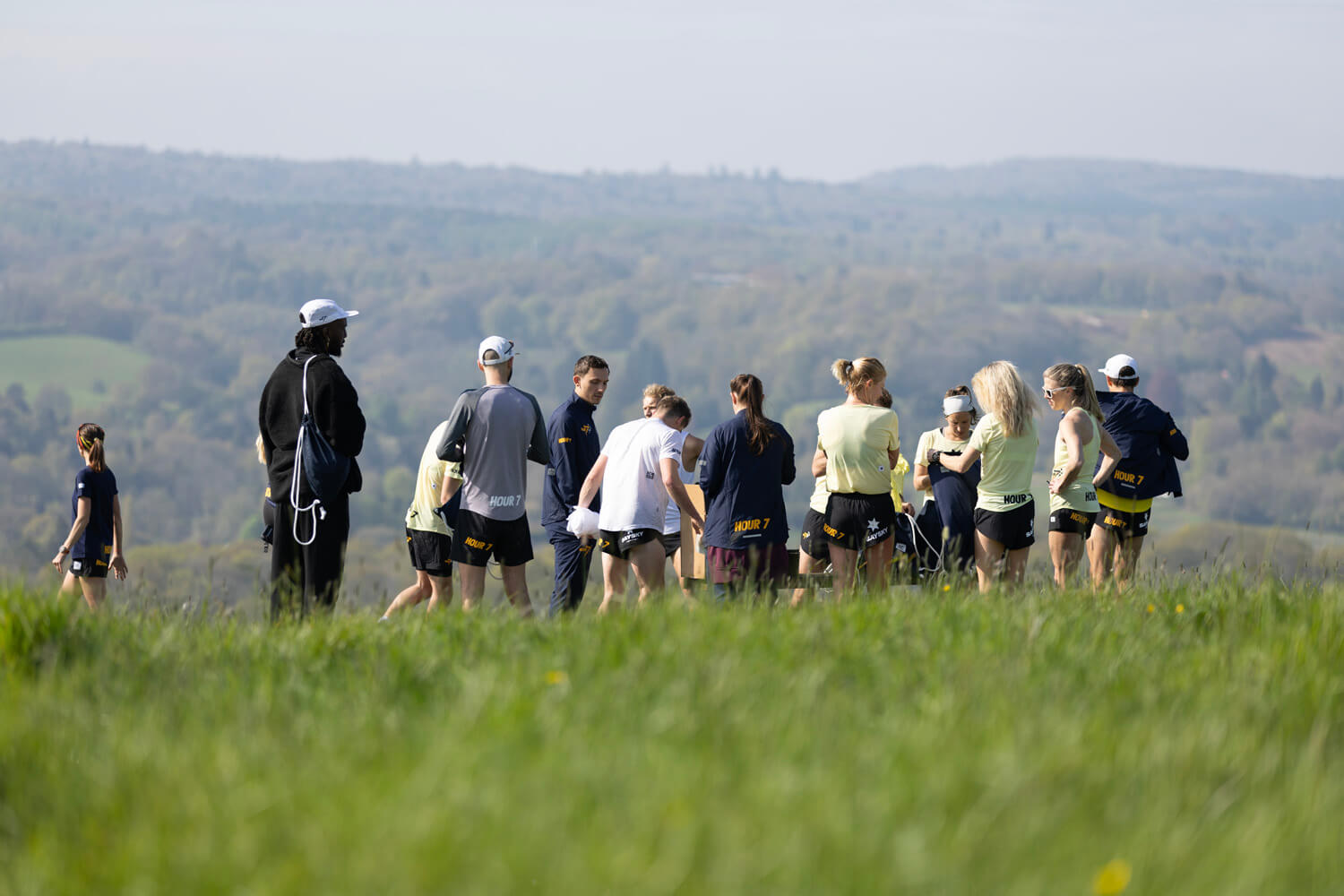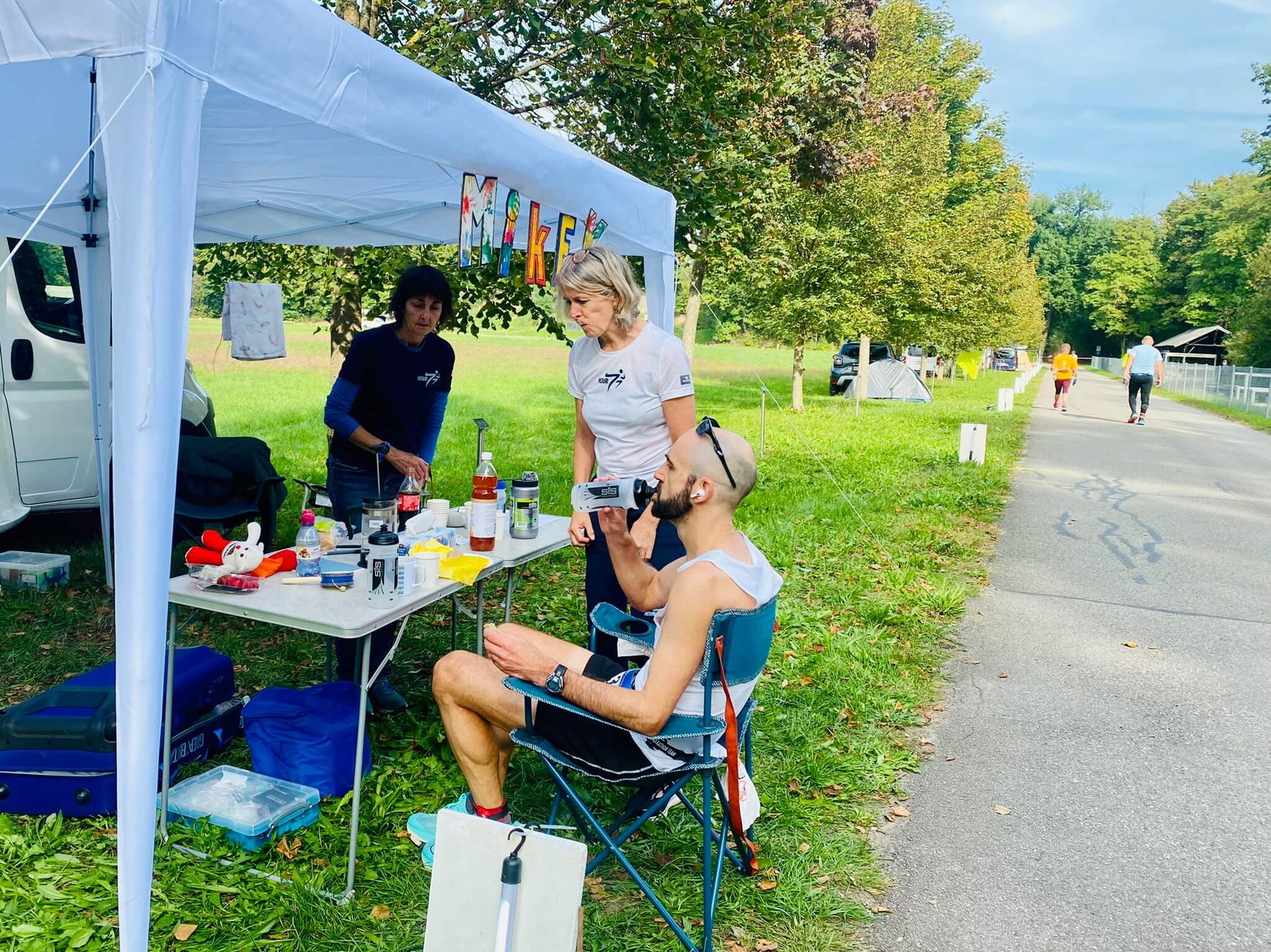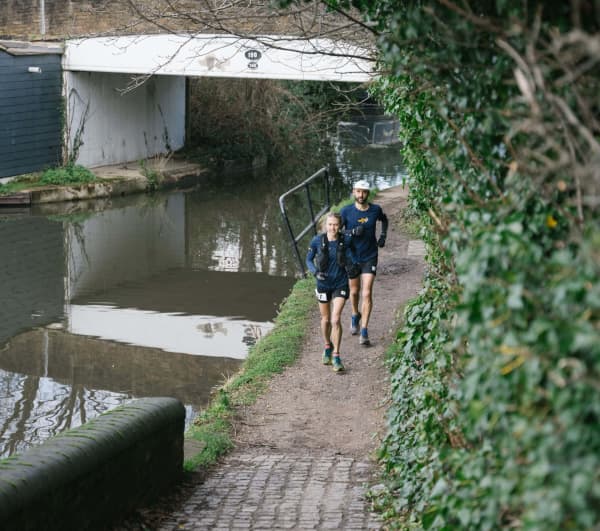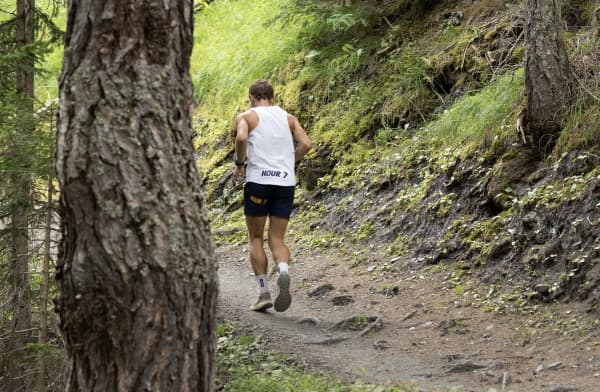Overview
On the face of it, running 100 miles is a very individual effort. The only pair of legs that can get you to the finish is your own. And it will be your mind that decides what is possible on the day. But when an athlete crosses the line with relief and joy, the achievement is most often shared. That finish or win in a sport for individuals, may in fact be a great team victory.

Samantha Amend on the way to setting a new Women's British 100 mile record. (Photo: Trevor Hunter)
Crew
In ultra-running, athletes will often be looked after on race day by a number of friends or family, known as a ‘crew’. At an elite and international level, the crew might also include experts such as coaches, physiotherapists and sports nutritionists. Crewing is a major commitment in endurance events, which might involve significant travel, extreme weather conditions, and days and nights with little or no sleep.
Time and Energy
At its most basic level, the crew is there to hand the athlete what they need – food, drink, a headtorch, a warm jacket. When it comes to performance, this can save a lot of time otherwise lost getting organised at aid stations. The athlete will often need to carry less, saving significant energy. Just like a well-drilled Formula One race crew saves critical fractions of a second, a dedicated ultra crew can save a runner many minutes, or even hours in the longest events.
An Extension of the Brain
As the hours go by, the crew becomes an extension of the athlete’s mind. Exhaustion and light-headedness impair thinking: what to eat and drink, how cold is it and what to wear. Calculation becomes impossible and this too may fall to the crew: is this fast enough, what is achievable, what does this mean for our chances of success.
As the effort takes its toll, the athlete faces a mental struggle. The will to go on, the reasons why. A few of the right words can make all the difference.

Encouragment and information from the crew - Brugg 48-Hour race.
Resilience and the Big Picture
There may come a time, or many times in a single day or night, when the athlete decides to quit. In their head is a raging argument between the will to carry on and the part of their brain trying everything it can to make them stop. The dream of months or years may be overwhelmed by an all-consuming need for an end to the struggle. In such moments the crew is the custodian of the big picture: what it means to finish, what remains possible, what the impact of quitting will be in the months and years that follow.
The crew may need to encourage their athlete back onto the mountain or road – a difficult act for which their runner might forever be grateful. But they may also need to help them stop – after too many hours of illness, or when carrying on would mean long-term injury or worse.
Iterative Learning
On the extreme edge of performance the path is narrow, with much that needs to go right. It is possible to try new things under full racing conditions only a few times a year, or less. This makes learning from every race, whatever the outcome, essential. The crew plays a major part in planning, making suggestions based on past experience. During the race they will take notes: what happened in reality, what worked, what didn’t, new ideas, something another crew tried. Without them only a fraction of this learning would be available for the next iteration.
Professional Input
The elite athlete may have spent time in the physiology lab, talked with a performance psychologist, worked with a nutritionist, a coach and a strength and conditioning expert. There will normally be a physio or osteopath involved and possibly other professionals. Serious amateur athletes will often have their own virtual team of professionals. An athlete at any level is the sum of many things, including the input, good or bad, they received from others. At its best, this input will have a profound impact on performance.

Hour 7 experts and athletes in discussion before a session on the North Downs. (Photo: Geoff Lowe)
Those Who Care
Above all else, it is the supportive partners, family, colleagues and friends who share in the success. Perhaps they crew. Maybe they look after the children so the athlete can train. It could be they gave them time off work to travel to the race. It might even be as simple as an encouraging word. And perhaps it is the messages of belief, both subtle and explicit, that are the greatest gift of all.

Samantha Amend with some of her support team after setting a 100 mile British Record. (Photo: Trevor Hunter)



